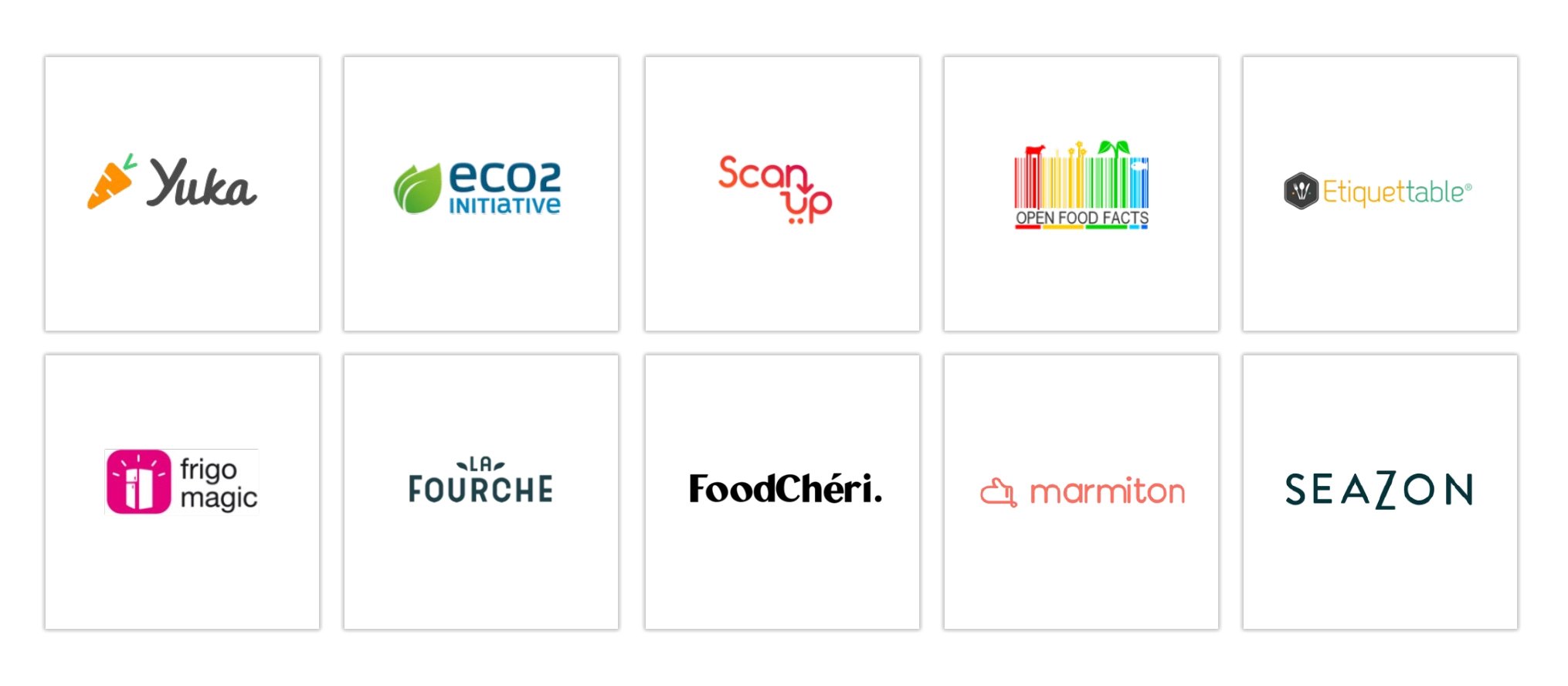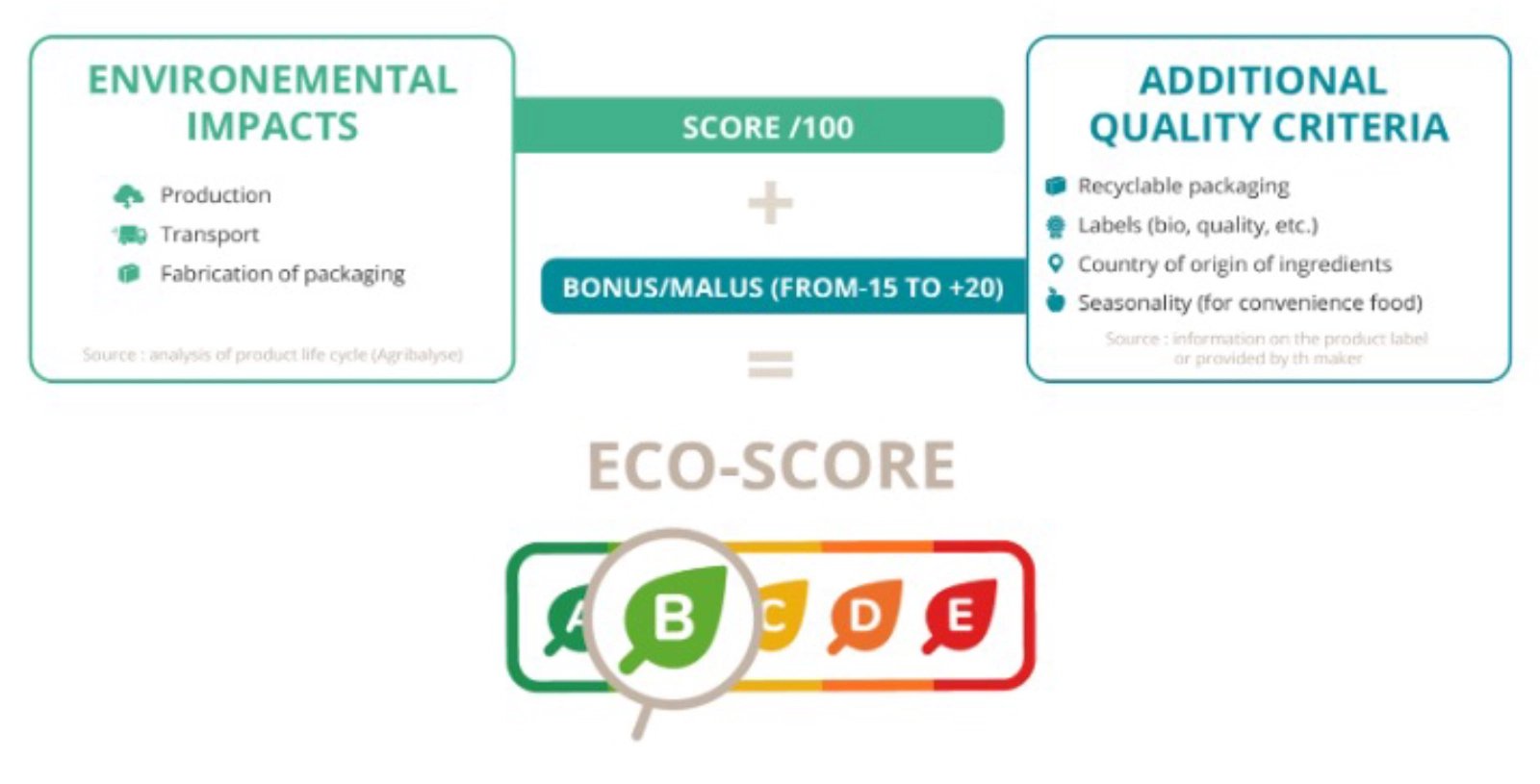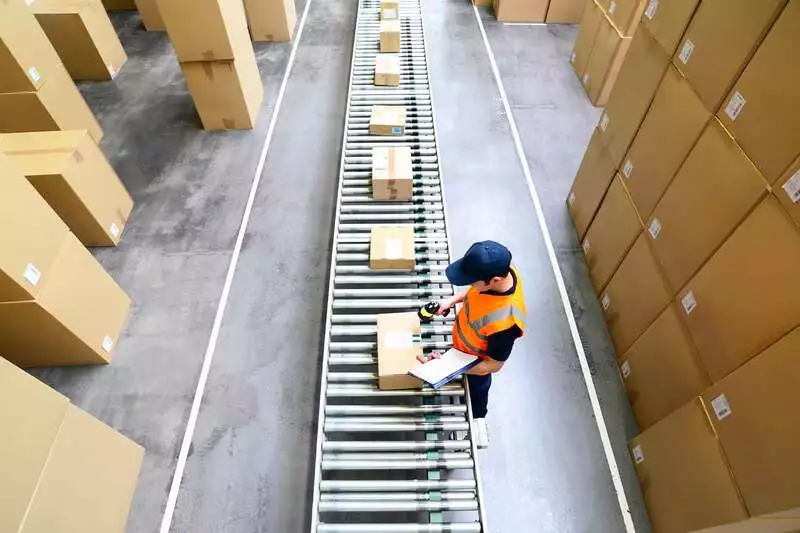The French-based Eco-Score is indicative of the challenges in grocery retail who needs to calculate and communicate product lifecycles and sustainability data. It requires unified data management and a diverse skill set.

-3.webp?width=245&height=245&name=MicrosoftTeams-image%20(2)-3.webp) Interview with Paarijat Bose, Senior Consultant, Stibo Systems, about sustainability scoring and life cycle assessment for food products.
Interview with Paarijat Bose, Senior Consultant, Stibo Systems, about sustainability scoring and life cycle assessment for food products.
Prior to joining Stibo Systems, Paarijat worked as a business consultant at a major Belgian retailer. In this role she facilitated the accuracy of sustainability data, mapping requirements for products. She ensured the correctness of sustainability information and created information models and data lineage. With this background, Paarijat has in-depth knowledge about a topic that is high on many retailers’ agenda right now: life cycle assessment scoring and sustainability data management. We asked her to share some of that knowledge, specifically how to obtain and calculate sustainability data to make it fit for scoring.
Grocery retailers are facing a huge challenge regarding sustainability because they need to communicate product life cycle assessments to consumers. But where should they start? Expectations are high and so is the number of new sustainability standards that seem to crop up daily.
There are several standards based on numerical parameters, such as Product Environmental Footprint, Life Cycle Assessment (LCA) score and Green Premium which can easily be overwhelming for retailers and their customers. These are calculation methods to be used when it comes to KPIs and industrial performance metrics but what matters the most to retailers is the simplified indicator like Digital Product Passport (for textiles, construction, industrial, electric vehicle and batteries) or Eco-Score (for food) that simplifies the concept and makes it easy to choose products that are good for both consumers and the environment.
This kind of easy-to-understand number or indicator can also help retailers promote environmentally friendly products, increase sales to the conscious customer and monitor easily comparative metrics for sustainability reporting as well. Take the Eco-Score as an example.
What is the Eco-Score?
The Eco-Score is an indicator of the ecological footprint of a food product. It is modeled after the Nutri-Score, which calculates the nutritional value of a product. The Eco-Score has a coloured logo in the shape of a leaf with a letter from A (low environmental impact) to E (very high environmental impact). This score can help support more sustainable food choices, promote virtuous agricultural practices, minimize resource utilization, reduce global warming and preserve life for future generations.
The methodology to calculate the Eco-Score was developed by a group of eight independent players in France: ECO2 Initiative, Etiquettable, FoodChéri, Marmiton, Open Food Facts, ScanUp, Seazon and Yuka. The score was introduced in January 2021 with the aim of giving customers instant information on the environmental impact of a product and thus helping them to consume more sustainably. Colruyt Group launched the Eco-score in Belgium in March 2021, Carrefour announced the score on the packaging of many products in France. In the same year, Lidl Belgium also started displaying Eco-Score on their products. In the meantime, the Eco-score can be found through more and more channels: not only on the packaging or price labels of many products but through barcode scanners and search functions also in apps and on various websites. In addition to the scores of retailers' private label products, the scores of national brand products are increasingly available.
Is there any legal basis for the Eco-Score?
As of today, Eco-Score is a voluntary product label by a joint voluntary effort of players in the domains of computing, distribution and catering. They have a common ambition: to create a simple tool that can be used by all to reduce the impact of food production on the planet. This consortium decided to create an independent, transparent and collaborative methodology based on available public data.

In 2021, the European Commission registered a European Citizens’ Initiative calling for a “European Eco-Score” to inform consumers about the ecological impact on product labeling.
The European Commission is expected to put forward a proposal for an EU-wide food labeling scheme at the end of 2022. This framework will consider nutritional aspects (like in Nutri-Score) useful to support public health objectives, as well as sustainable and social elements of food products (targeted in Eco-Score). We need to wait to know if the Eco-Score made it in the list of mandates or if a new framework is proposed.
Since the Eco-Score is a voluntary measure, there is no penalty involved. However, when a standard obligation comes from the EU, the situation might change as it has for nutritional information that is mandated in certain EU countries and in the UK.
How do you calculate the Eco-Score?
The Eco-Score is a sum-up of the Life Cycle Assessment (LCA) score of the product itself, along with some bonus points and penalty points (also known as malus points) based on the product packaging, production processes, supply chain parameters like travel, the policies of the countries involved, and whether the product affects any endangered species.

Image source: docs.score-environnemental.com
The Life Cycle Assessment part of the Eco-Score is calculated from public data produced by ADEME (the French Agency for Ecological Transition) and INRAE, a public research institute working for the coherent and sustainable development of agriculture, food and the environment, within the framework of the Agribalyse project. It evaluates the average environmental impact of 2,500 product categories, such as biscuit for breakfast, biscuit for breakfast with reducing sugars, biscuit for breakfast with chocolate, etc., which are very detailed in each category.
Can you shed some light on the teams and profiles involved in the calculation of the Eco-Score for a retailer
Sustainability data management is a vast topic that needs an array of niche skills even though the actual team size can be moderate. If I just focus on the Eco-Score for food industries, a retailer will need sustainability advisors and dietitians, along with data governance specialists, data scientists, product information experts and supplier relationship managers, as well as sourcing/procurement advisors.
Obviously, the legal team, marketing and business and technical architects need to be involved, too.
The whole program is typically overseen by a chief sustainability officer, an ESG manager or product manager.
What is the end-to-end process behind the calculation and the preparation of product life cycle data to make it fit for scoring?
First, you need to collect data from suppliers. Then you need to verify the data with internal quality teams.
If the product is already in the GDSN network, you need to verify the correctness of data on the labels, ingredients and certification. However, if the product is new, the data collected is only verified internally.
Once the data is collected the product is mapped to an Agribalyse category available in Présentation - Eco-Score. This mapping can be complex and based on the complete property of the product. If it is a fruit or meat, end-to-end details on each associated ingredient is considered such as the cut, type, condition, color, temperature, aroma, fermentation, etc. This process can be complex, requiring the involvement of dietitians or nutritionists and AI/ML with help of natural language processing (NLP) to automate the process with proper data feeds.
Once the category is mapped by considering all production stages like agriculture, processing, packaging, transportation, distribution and consumption based on environmental impact indicators, the Life Cycle Assessment score is determined. Environmental impact indicators considered include climate change, carbon footprint, ozone depletion, ionizing radiation, land, water and energy use, air and marine pollution and freshwater pollution (particulate matter, acidification, eutrophication) and resource depletion.
Then bonus and malus points are calculated on critical environmental impacts that are not completely covered by the life cycle assessments (such as biodiversity) and the specificities of each product within the same category, the reference score is modulated with bonuses and maluses on factors such as:
- Production method: A bonus is awarded to products that have an official sign, label or certification that guarantees environmental benefits (organic, fair trade, HVE, Label Rouge, Bleu Blanc Coeur, MSC/ASC).
- Origin of ingredients: A bonus is awarded based on the origin of the ingredients. This bonus considers the impact on transport and the environmental policy of origin country.
- Endangered species: A malus is attributed to products containing ingredients that significantly negatively impact biodiversity and ecosystems, such as palm oil, the production of which is responsible for massive deforestation.
- Packaging: A malus is calculated to consider the lack of packaging circularity (the use of recycled raw materials and recyclability) and over-packaging based on ability of country of activity.
Finally, the scores are summed up to get the final Eco-Score
It is critical to note that any data correction can require resources from supplier or the quality department, calculation engines, or reviewers of product or sustainability data – thereby making it a highly time-consuming and costly process.
Obviously, that is quite a charge on retailers to assess product life cycles and get their sustainability data in order. What is your experience of the amount of manual work behind the calculation, and whether some of the process can be automated?
There is a considerable effort in collecting all data from suppliers before even the calculation can begin. In many cases, new methods of data sourcing are used due to the lack of sustainability-specific data capturing tools. This causes double effort from suppliers to enter the data multiple times in various sources.
In the case of manual data entry, there are data quality and governance checks to be done, as the sustainability data is sensitive and can impact a brand image and supplier relationships if erroneous data is released.
Then comes the calculation part, which even if automated, needs to be verified against simulated values to ensure the correctness of data and consistency with standard data sources. For example, the label/certification declaration should match the market declarations (like GDSN); any deviation can even bring legal problems.
Then any correction of data is done in consensus with the supplier, which takes more time. In many cases, this is done by emailing or over the phone communication, which can have its own carbon footprint to be analytically critical about it.
Any clarification or change in method is cumbersome as it needs to be verified by the consortium, and suppliers need to be made aware of changes. In some cases, massive data corrections are needed.
As far as automation is concerned, the Eco-Score calculation can be automated.
Also, the mapping of the Agribalyse category can be automated by use of NLP and AI but manual validation is still needed to ensure the correctness of sensitive data as it impacts the complete Eco-Score.
There can be automated integrations like the ADME data source integration to calculation engines or to the retailer’s own data pool.
The approval processes of any data alteration and notification to stakeholders can also be automated.
How much of the sustainability data is supplier information?
Supplier information is the basis of sustainability data. For example, in Eco-Score we cannot even get started mapping data to Agribalyse to get the Life Cycle Assessment score or any of the bonus-maluses without suppliers sharing their ingredients and origin data. Even label and certification data comes directly from the supplier or from supplier data inputs in a standard data pool like GS1.
WHITE PAPER
Strategies for a Superior Omnichannel Experience
How to leverage your data to win
customer loyalty in retail.

Which sustainability data is particularly hard to get?
The mapping of the Agribalyse category based on which the Life Cycle Assessment is determined is the tricky one. But sometimes even simple things like ingredients can be difficult to identify. For example, on a croquette, is its potato starch or potato powder an ingredient? We need to know whether it is from the producer or the supplier.
What is the hardest part of sustainability data management from an operational viewpoint?
Data correction and approvals on changes that also needs to be promptly reported to all stakeholders.
Do you see any room for optimization that can make the product life cycle assessment more efficient and perhaps increase data quality?
Automated data management can save time and improve quality as sustainability data is of gigantic volume.
Collection, integration and management of data needs a data management platform for sustainability data. Any changes in incoming data or underlying regulations can trigger necessary approvals and notifications. Data from a single source used for internal and external communication will make it easier for organizations to meet sustainability goals and compliance requirements.
What is your most important lesson from working with sustainability data management in retail?
Sustainability data management is an integral part of a retailer’s product master data management, supplier data and related product information management and location data such as origin and activity region. This is crucial information for life cycle assessments and should not be treated or curated in silos. Properly governed, this data can enhance efficiency in business operations, like supply chain and marketing and impact organizational brand value. The problem is that sustainability data has many diverse sources, and when kept isolated, a lot of effort is needed to correct any discrepancy and avoid miscommunications. Therefore, a single source of information is, as well as a solid data governance strategy, is necessary.
What advice will you give to grocery retailers who are at the beginning of their sustainability journey?
Retailers have a cumbersome journey ahead of them, but the good news is that the industry’s sustainability initiatives are supported by political strategy, climate needs and consumer choices. Time is in favor of those who are acting now. Retailers have an opportunity to translate this effort into new business.
Retailers' unique position in the supply chain between upstream suppliers and downstream consumers is the key to a holistic circular economy opportunity. Retailers can promote sustainable consumption by offering sustainable products and information campaigns and sustainable production by enforcing responsible procurement policies of suppliers.
To be able to pull the sustainability lever with power, retailers need to onboard specialists who understand data, and they need to invest in processes and technology that can deliver correct data at the right time.
Retailers also need to focus on managing sustainability data from the source and eliminate silos, which requires clean and precise data management. As most of the sustainability information is convergent with master data, it is important to have the correct information from the beginning available to all stakeholders.
EXPLORE
Master Data Management for Retailers






































































































































































































